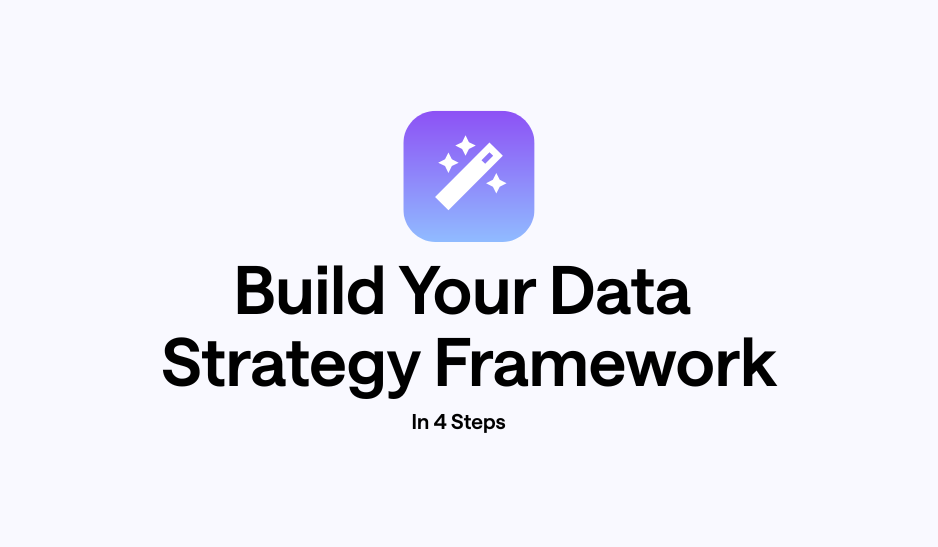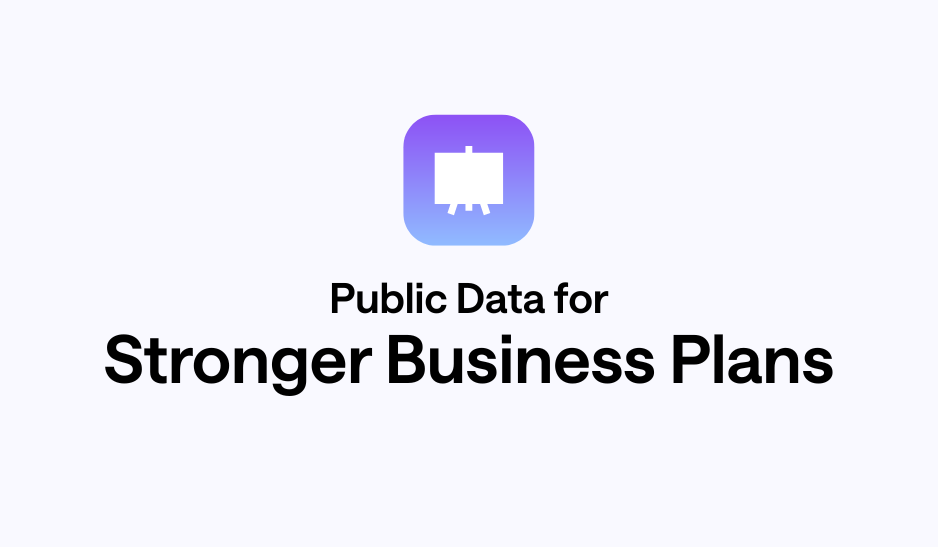Key Market Research Skills for Data-Driven Decisions in 2025
Effective market research is the foundation of any successful business strategy, from product launches to market expansion. Traditionally, this field demanded a specific and often siloed set of skills. A market researcher needed to be part data scientist, part statistician, and part storyteller. The process was resource-intensive, often requiring proficiency in statistical software such as SPSS or programming languages like SQL and Python to extract and manipulate data from complex public sources, including the American Community Survey (ACS). This technical barrier meant that generating even a single chart to answer a business question could take days or weeks of specialized work.
Today, the landscape of market research skills is changing. While foundational analytical abilities remain critical, the rise of AI-powered data analysis platforms has automated many of the cumbersome technical tasks. This shift allows professionals to focus less on the how of data extraction and more on the what and why—asking smarter questions, interpreting results with deeper insight, and translating data into actionable business strategy. This evolution doesn't eliminate the need for skilled researchers; it elevates their role from data wranglers to strategic advisors.
-1.png?width=3200&height=2400&name=In%20Post%20Blog%20Images%20(6)-1.png)
Foundational Skill 1: Strategic Question Formulation
The most critical skill in modern market research is the ability to formulate precise, impactful questions. An analysis is only as good as the question that initiates it. Vague inquiries lead to ambiguous, unusable results. This skill sits at the intersection of business acumen and intellectual curiosity.
Problem:
Many market research projects fail because the initial questions are too broad or misaligned with business objectives. For instance, a startup founder asking, "Is there a market for my product in California?" is likely to get an overwhelming amount of disconnected data. This question lacks specificity regarding target demographics, income levels, or consumer behaviors.
Context and Background:
Historically, the difficulty of querying large datasets meant researchers had to be conservative with their lines of inquiry. Each new question could trigger another lengthy data pull and cleaning cycle. This limitation often discouraged exploratory analysis, forcing teams to commit to a narrow path early in a project. Defining the research scope remains a primary challenge in the industry, as a poorly defined scope leads to wasted resources and inconclusive results.
Solution:
AI-powered platforms enable a more iterative and exploratory approach to analysis. With a tool like Cambium AI, a researcher can use natural language to ask highly specific questions directly. The founder's vague question can be refined into a series of precise queries executed in seconds:
-
"Show me a map of median household income for Los Angeles County."
-
"Create a bar chart of the population aged 25-34 in San Francisco, San Diego, and San Jose."
-
"What is the percentage of households with children under 18 in Orange County versus Sacramento County?"

Practical Applications:
A management consultant advising a retail client on expansion can use this capability for rapid hypothesis testing. Instead of commissioning a multi-week study, they can ask dozens of questions in a single session to identify high-potential locations. For example, they could query for counties with a high concentration of their target demographic ($100k+ household income, college-educated, aged 30-49) and instantly visualize the results on a map, refining their search in real-time based on the data. This transforms the research process from a static, linear project into a dynamic conversation with the data.
Skill 2: From Technical Proficiency to Analytical Interpretation
The traditional market research skill set was heavily weighted toward technical execution. Proficiency in SQL for database queries, R or Python for statistical analysis, and Tableau for visualization were often non-negotiable job requirements. While these skills still have value, their necessity for routine market analysis is diminishing.
Problem:
The high demand for technical skills creates a bottleneck. Business analysts, marketers, and solo founders who possess deep industry knowledge but lack coding expertise are often locked out of direct data analysis. They must rely on specialized data teams, leading to delays and potential miscommunication of business context. A simple request for a demographic breakdown can get stuck in a departmental queue for a week.
Context and Background:
The U.S. Census Bureau provides an immense repository of public data, such as the Decennial Census and the ACS, which are invaluable for market research. However, accessing this data programmatically via APIs or downloading large PUMS (Public Use Microdata Samples) files requires significant technical expertise. The learning curve is steep, creating a barrier between the data and the decision-makers.
Solution:
No-code data analysis tools remove this technical barrier. Cambium AI integrates directly with these public datasets, allowing users to perform complex queries using plain English. The platform handles the underlying API calls, data joins, and statistical calculations, presenting the user with a finished chart or map. This democratizes data access, shifting the required skill from writing a SQL query to critically evaluating the resulting chart. The user no longer needs to know how to join demographic and economic tables; they only need to know what insights to look for.
Implementation Guidance:
To cultivate this skill, professionals should focus on data literacy. This includes understanding statistical concepts like correlation versus causation, margin of error, and sample size significance. Instead of learning Python syntax, a marketer's time is better spent learning how to compare different demographic variables or question the underlying assumptions of a geographic data map. For example, upon seeing a chart showing high median income in an area, the skilled analyst asks: "Is this a function of a few very high earners, or is wealth more evenly distributed? How does educational attainment in this area compare to neighboring ones?"
Skill 3: Data Synthesis and Narrative Building
Data points in isolation are trivia. The ultimate goal of market research is to synthesize disparate pieces of information into a coherent narrative that supports a strategic business decision. This skill involves connecting the dots between quantitative data and qualitative context to tell a compelling story.
Problem:
A common failure in market research is the "data dump"—presenting stakeholders with a slide deck full of charts and tables but no clear conclusion or recommendation. This happens when the researcher focuses on displaying the data they found rather than answering the core business question. The audience is left confused, asking, "What does this all mean for us?"
Context and Background:
With Census and ACS data, the challenge of synthesis is significant. A researcher might have data on population density, median income, means of transportation to work, and educational attainment. Weaving these distinct datasets into a single, actionable narrative requires a high level of analytical and communication skills.
Solution:
By dramatically reducing the time required for data collection and visualization, AI tools free up valuable cognitive resources for synthesis and storytelling. A business analyst can use Cambium AI to quickly pull and chart data from public sources in a single workflow. In minutes, they can generate a map of median income, a chart of educational attainment, and a table of population growth for a target region.
Practical Applications:
A public policy professional assessing the need for a new public transit line can use this approach to build a comprehensive case.
-
Query 1 (ACS): "Map population density by county subdivision for Austin, Texas."
-
Query 2 (ACS): "Chart the percentage of households with no vehicle available by county subdivision in the same area."
-
Query 3 (ACS): "Show a table of mean commute times to work for residents in those same county subdivisions."
The researcher’s primary skill is no longer in finding and cleaning these three datasets. Instead, their expertise is demonstrated by their ability to synthesize the outputs: "The maps show that high-density population county subdivisions in East Austin have a significantly higher percentage of households without vehicles. When combined with data showing longer average commute times for these same areas, a clear narrative emerges. This data indicates a population that is heavily reliant on transportation and faces significant travel burdens, strengthening the case for a new transit line to support mobility equity." This is how data is translated into a persuasive, evidence-based narrative.
The essential skills for market research are not disappearing; they are evolving. The emphasis is moving away from manual, technical execution and toward higher-order strategic thinking. The modern market researcher's value lies in their ability to ask insightful questions, critically interpret automated analyses, and synthesize findings into a clear narrative that drives business action. Tedious tasks that once consumed weeks of a project’s timeline can now be completed in minutes.
This shift empowers a broader range of professionals to engage directly with data and make evidence-based decisions. By removing the technical barriers to entry, platforms like Cambium AI allow human expertise to be focused where it matters most: on strategy, context, and a deep understanding of the market. The future of market research is not about becoming a coder; it's about becoming a more effective strategist.
To see how you can reduce your research time and focus on strategic insights, learn more about how Cambium AI is being used by professionals, or start your free trial here.
.png)

